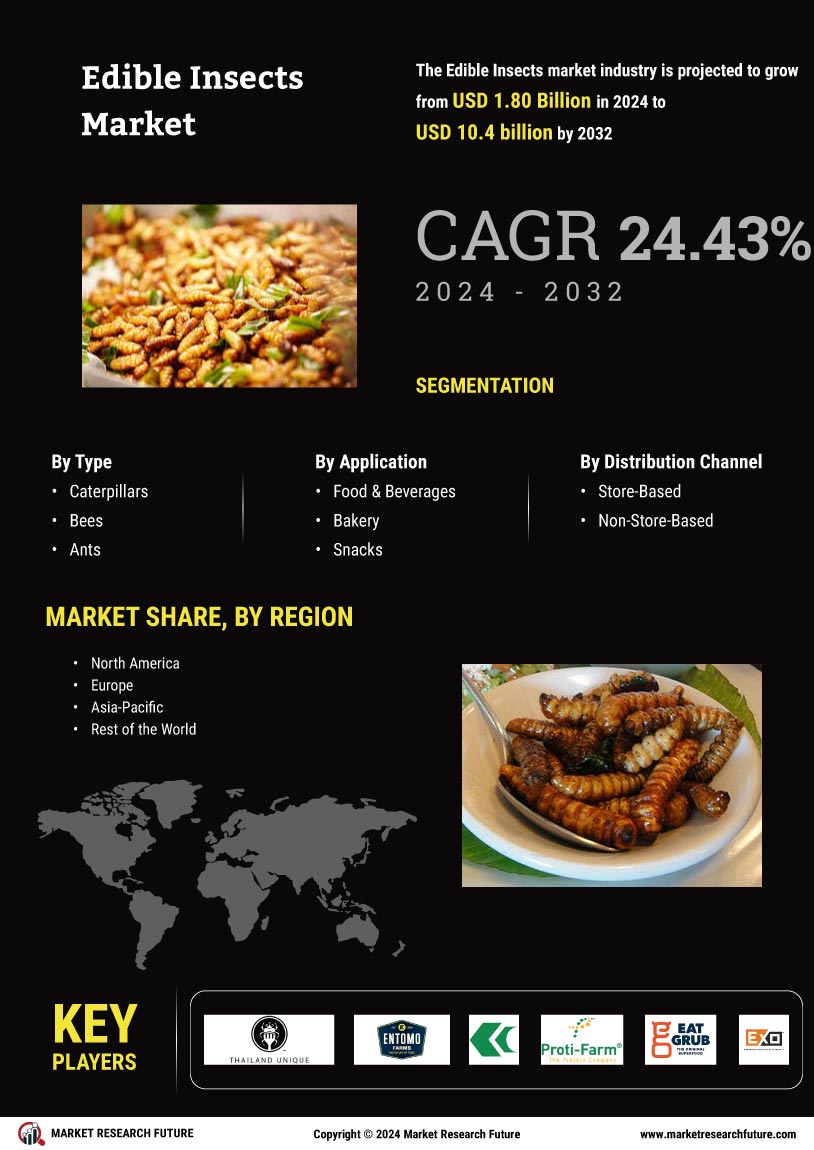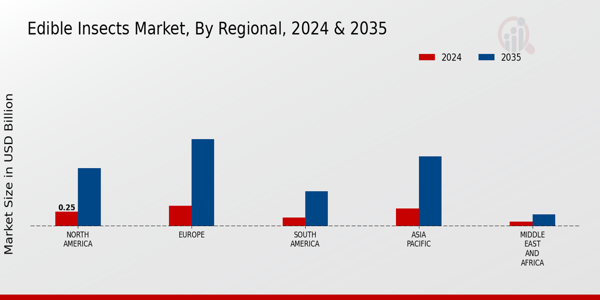Rising Global Population
The Global Edible Insects Market Industry is experiencing growth driven by the increasing global population, projected to reach approximately 9.7 billion by 2050. This surge in population creates a pressing demand for sustainable protein sources. Edible insects, which require significantly less land, water, and feed compared to traditional livestock, present a viable solution. For instance, crickets require only 1.7 kg of feed to produce 1 kg of body weight, compared to 8 kg for cattle. As the population expands, the need for alternative protein sources becomes more critical, positioning edible insects as a key player in meeting future food security challenges.
Market Growth Projections
Government Support and Regulation
The Global Edible Insects Market Industry is bolstered by government support and regulatory frameworks that promote the consumption of edible insects. Various countries are beginning to recognize the potential of insects as a food source and are implementing guidelines for their production and sale. For instance, the European Food Safety Authority has established regulations for the use of insects in food products, fostering a safer market environment. This regulatory support encourages investment and innovation within the industry, facilitating growth. As governments continue to endorse edible insects as a sustainable protein source, the market is likely to benefit from increased consumer trust and acceptance.
Nutritional Benefits of Edible Insects
The Global Edible Insects Market Industry benefits from the nutritional advantages offered by edible insects. These insects are rich in protein, vitamins, and minerals, making them an attractive option for health-conscious consumers. For instance, crickets contain about 60% protein by weight and are a good source of B vitamins and iron. This nutritional profile appeals to various demographics, including athletes and individuals seeking alternative protein sources. As awareness of the health benefits of edible insects spreads, the market is expected to expand, potentially reaching a valuation of 4.5 USD Billion by 2035, with a CAGR of 13.39% from 2025 to 2035.
Sustainability and Environmental Concerns
The Global Edible Insects Market Industry is increasingly influenced by sustainability and environmental concerns. Traditional livestock farming contributes significantly to greenhouse gas emissions, deforestation, and biodiversity loss. In contrast, edible insects produce fewer emissions and have a lower ecological footprint. For example, producing 1 kg of crickets generates only 0.1 kg of greenhouse gases, compared to 7.1 kg for beef. As consumers become more environmentally conscious, the demand for sustainable food sources rises, leading to a greater acceptance of edible insects as a viable alternative. This shift is likely to enhance market growth, with projections indicating a market value of 1.13 USD Billion in 2024.
Innovative Food Products and Culinary Trends
The Global Edible Insects Market Industry is witnessing innovation in food products and culinary applications. Chefs and food manufacturers are increasingly incorporating edible insects into various cuisines, creating unique dishes that appeal to adventurous eaters. Products such as protein bars, snacks, and even pasta made from cricket flour are gaining traction. This trend not only enhances the culinary landscape but also promotes the nutritional benefits of insects. As the food industry embraces these innovations, consumer acceptance is likely to grow, further driving market expansion. The increasing availability of insect-based products in mainstream retail channels indicates a promising future for this sector.

















